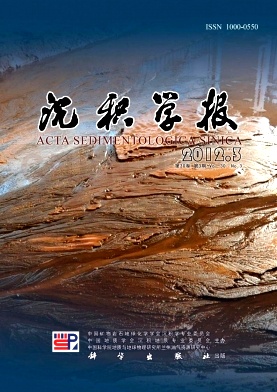Carbon Isotopic Thermodynamic Fractionation of Organic Matter and Carbon Isotopic Composition of Natural Gase
- Publish Date: 2012-06-10
-
Key words:
- carbon isotope /
- thermodynamics isotopic fractionation /
- natural gas /
- &beta /
- factor /
- methoxy
Abstract: Different structures and functional groups in organic matter have different carbon isotopic compositions. This kind of difference can be predicted by carbon isotopic thermodynamic factor (βfactor) of organic matter. In the simulation experiments, the carbon isotopic composition of CO2 is relatively heavy, which is related to that the thermodynamic carbon isotopic factor (β13C) of carboxyl is relatively large in kerogen. In hydrous experiments, part of methylene finally changes into CO2 by way of cleavage, hydrogen transfer and reaction with water. Because the β13C of methylene is relatively small, correspondingly the carbon isotopic composition of the increased CO2 is relatively light in hydrous experiments, so the carbon isotopic composition of CO2 in the two series of hydrous experiments is slightly lighter than that in anhydrous experiments. This phenomenon proves that water medium is involved in the chemical reaction of hydrocarbon generation. In the three series of experiments, the carbon isotopic composition of methane is relatively heavy in the low temperature phase (≤300℃), which may be related to that the carbon isotopic composition of methane precursor is heavier in this earlymature stage, such as methoxy group. The thermodynamic carbon isotopic factor of methoxy is relatively heavy, which causes that the isotopic composition of methane is relatively heavy in the low evolution stage. While the theory of isotope kinetic fractionation is developing at a high speed at present, we still can not neglect the isotope thermodynamic fractionation, which will be a great help to us in the further study on the mechanism of hydrocarbon generation.
| Citation: | Carbon Isotopic Thermodynamic Fractionation of Organic Matter and Carbon Isotopic Composition of Natural Gase[J]. Acta Sedimentologica Sinica, 2012, 30(3): 588-593. |






 DownLoad:
DownLoad: